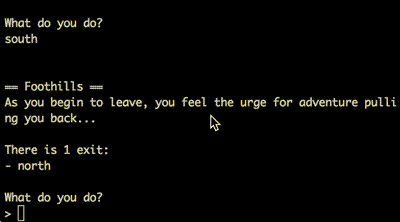Solving Synacor Challenge
If writing a virtual machine to crawl a dungeon is your kind of game.
The Synacor Challenge was posted some years ago, but I’ve stumbled on it only recently, in a comment to Jeff Atwood’s post about programming games.
Many thanks to Eric Wastl and Synacor who still runs it online.
The challenge starts with you writing a virtual machine, and has a number of steps laid out on a dungeon map. Skills required (or learned on the go): virtual machines, debuggers, disassemblers, reverse engineering, tree search, dungeon crawling.
SPOILER ALERT
At this point, if you are interested in completing the challenge yourself, stop reading, and have fun coding.
My notes and code
Virtual Machine
The only thing you are given is a binary image and a spec to virtual machine to run it, so I started coding VM, wondering what kind of game it would be.
The VM spec is straightforward, pay attention to modulo arithmetics. The image runs self-testing routines at boot, so use that as a lazy TDD.
At this point I can run the image and pass self-test:
./vm challenge.bin
The world
This is when the dungeon crawling starts. After learning basic controls and getting codes, I find myself stuck in twisty little passages, which seems like a non-Euclidean space.
After initial attempts to map rooms on paper, I start poking inside the image. For the task, I make a disassembler, pretentiously called IDA, and now can dump the image in assembly form:
./ida challenge.bin
But the image is encrypted, and runs self-decryption at the start. So I dump memory from a running game, and disassemble that.
At this point I think of a proper save and restore from save, and some debugger mechanisms, so I start coding a shell over virtual machine.
./synacor challenge.bin

Twisty passages
Having these basic tools, I find how dungeon rooms are stored in binary, and write code to extract them as a graph:
./mapper dump.bin
I can see the path now, that was tricky.
Monument
Solving the monument should be easy, and you don’t need debugger for that.
With monument solved, I now have a teleporting device.
Teleporting
The first teleport is automatic, but the second is where the things start be interesting.
The book on teleportation gives enough hints to look inside the code. I upgrade my debugger, and find the register check of the teleporter.
The check function is several lines of code, and should be simple to solve, right? I rewrite the function, removing tail recursion, and it runs happily in console, but not terminating.
Is it stuck? Is it in a dead loop? If I cannot brute-force it, then may be I can reverse it’s operation, and solve it, given expected output?
After two days of heart-breaking attempts, I have the motivation to look closer at the function. I rewrite it in a high-level language, and now it’s not random jumps, it has a meaning. Analyzing its output on small inputs, the numbers seem to form a sequence, not a (pseudo-) random one.
3 5 13 32765
And given the minutes it took to compute the fourth number (I’m not patient enough for the next), I type “fast growing sequence”, and there it is, Ackermann function. Well, I didn’t expect someone try to compute the Universe on a pocket calculator.
You can find optimized Ackermann in Rosetta Code.
I implement the function, with added twist for third parameter, and brute-force through the numbers. I have the answer in seconds.
Well, lesson learned. Get the true meaning of the function. Analyze actual data.
With teleporting solved, I jump on the beach and walk to vault lock.
Vault Lock
Journal gives general description of the task, and I have all the tools at hand.
I extract data for the vault lock, with room operation and connections. Then I run a tree search to find the shortest solution, no tricks here.
If you are stuck with the mirror, do mirror in Photoshop.
Tools and languages
The code is mostly C++. See code repository